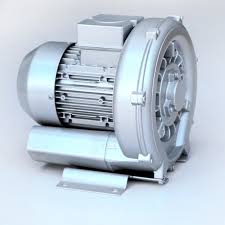Where is a blower motor located?
What is the difference? A blower motor resistor is a simple electric resistor. It’s used in cars where the blower motor has only 4 or 5 fixed speeds, as on the left side in this diagram. See the photo of a Ford blower motor resistor.
Cars with an automatic climate control system and vehicles where the blower speed can be adjusted gradually are equipped with an electronic blower motor control module, see the photo.
Where is a blower motor located?
Problems with a blower motor resistor are common in many cars. The most common symptom of a failed blower motor resistor is when the heater fan only runs at the highest speed setting (4 or 5) and doesn’t work at low speeds. In some cars, a failed blower motor resistor can cause a heater fan to stop working completely.
In most cases, a blower motor resistor fails due to corrosion or overheating. Sometimes, the mechanical resistance to the motor rotation causes an excessive electric current that can overheat and prematurely damage the blower motor resistor. For example, this happens when the fan blade is jammed by a foreign object or when the motor bearings are worn out and it doesn’t spin freely.
Problems with a blower motor control module are less frequent, but it fails for the same reason: due to corrosion or overheating when the motor is jammed or shorted. In most cases when a blower control module fails, the blower motor doesn’t work at all. In some cars (e.g. older GM trucks), a failed blower control module or processor can cause the blower motor to continue running even with the ignition OFF.
How is the blower motor resistor diagnosed?
Bad blower motor resistor
This Ford blower motor resistor has failed due to corrosion
Diagnostic procedures vary. Often a visual inspection of the resistor reveals the problem. For example, as you can see in this photo, the blower motor resistor in this Ford Escape has failed due to corrosion.
If the resistor shows no visual damage, the resistance between terminals must be checked and compared to specifications. If the resistance is out of specs, the resistor must be replaced.
For example, in this photo we measured the resistance of this blower motor resistor. According to the service manual, it must be around 4-5 ohms.
Testing a blower motor resistor with an ohm-meter
A failed resistor tested with an ohm-meter
In our case the ohmmeter shows open circuit, which means the resistor has failed.
Sometimes, a blower motor resistor might fail due to problems with the blower motor itself. This means after replacing the blower motor resistor, check if the blower motor runs freely and doesn’t make any noise. We have seen instances where a worn-out blower motor causes a recently replaced resistor to fail again. For example, this issue was common in older Chrysler and Dodge minivans. In this case, the blower motor must also be replaced. One of the symptoms of a worn out blower motor is that it can intermittently produce a loud screeching noise when running.
How to test a blower motor?
If the blower motor doesn’t work at all, the blower motor itself must be tested first. Typically it’s done by measuring the voltage at the blower motor connector when it’s turned on. If there is a voltage at the motor (at least 4-6 Volt at low speed and 12 Volt at high speed), but the motor doesn’t run, the motor is bad or jammed.
Testing blower motor voltage
Testing the voltage at the blower motor. If there is a voltage at the motor (at least 4-6 Volt at low speed and 12 Volt at high speed), but the motor doesn’t run, the motor is bad.
Things like leaves, twigs, nuts, pieces of a ripped cabin filter can jam the blade of the blower motor. This happens often in many cars.
If there is no voltage at the motor, the entire blower motor circuit must be tested, starting from a fuse. See: how to check a fuse in a car.
If a blower motor is bad, it will need to be replaced. The blower motor replacement costs from $320 to $650, depending on the car. In many cars it’s fairly easy; the blower motor is located behind the glove box and held by 3-4 screws. In others it might be located inside the dash (e;g Mazda 5) which makes replacement difficult.
blower & vacuum
Positive Displacement Blowers
Screw Compressors
Rotary Lobe Compressors
Turbo blowers
Where is a blower motor located?
Can a car run without a blower motor?
How do you know if your blower motor is bad?
How do you Unflood a leaf blower?
How do you fix a leaf blower that won’t start?
How do you start a leaf blower?
What is the difference between a blower and a fan?
What does blower motor do?
Can you use a leaf blower on wet leaves?
Are leaf blowers worth it?
Should I get a leaf blower or vacuum?
How does a Roots blower work?
What is the difference between a Roots blower and a screw blower?
What is a lobe blower?
What is the difference between fan blower and compressor?
What is a rotary blower?
How does a rotary lobe blower work?
What’s the difference between a fan and a blower?
What is a rotary screw air compressor?










